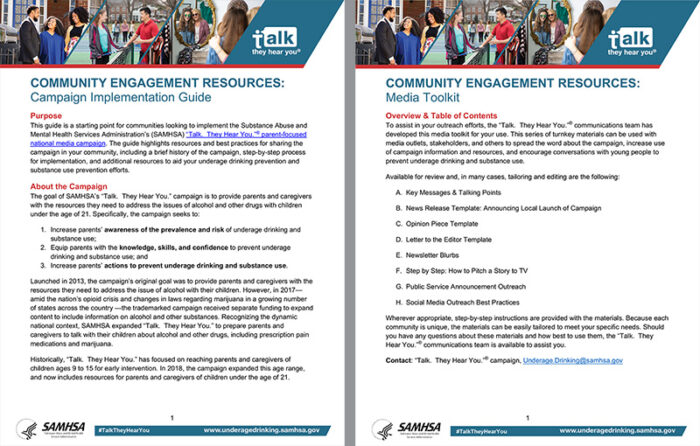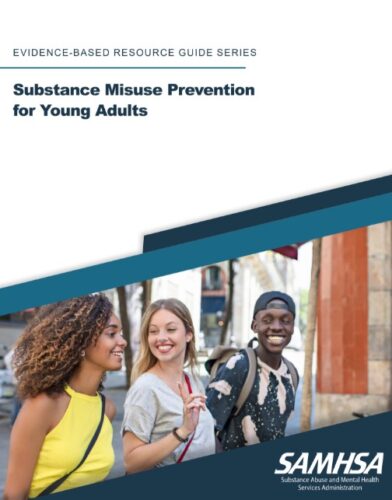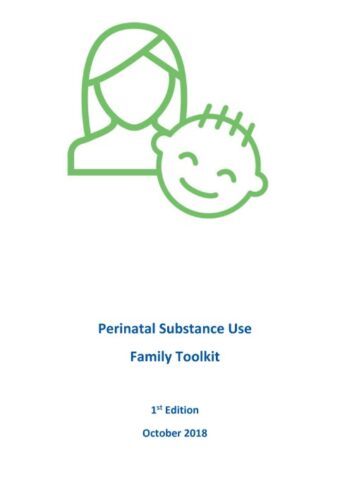Social Media
This tip sheet is designed to support youth-serving providers and organizations in effectively engaging with youth through social media. Developed in collaboration with youth, this resource includes tips and recommended strategies for content development and engagement on commonly used social media platforms.
National Council for Mental Wellbeing
GETTING CANDID: FRAMING THE CONVERSATION AROUND YOUTH SUBSTANCE USE PREVENTION
Social Media Tip Sheet
This tip sheet is designed to support youth-serving providers and organizations in effectively engaging with youth through social media. Developed in collaboration with youth, this resource includes tips and recommended strategies for content development and engagement on commonly used social media platforms.
Since target audiences and content can vary, it’s important to regularly gather insights
and analytics about engagement rates from your profiles using tools such as Facebook for
Business, Sprout Social and Google Analytics to adapt your efforts accordingly.
ENGAGEMENT STRATEGIES
- Post frequently. Quality is key, but quantity helps you build an audience and stay on others’ timelines. Post on social media at least three times per week.
- Mix it up! To keep and increase follower count, post a variety of content videos, multi-slide infographics, images of people. Graphics and even posts with one bold sentence on a black screen can attract attention.
- Be authentic. Be conversational and don’t be afraid to use the occasional emoji. Dig deep into the issues you care most about.
- Respond, retweet, engage! Use social media to interact with your followers. Share and repurpose user-generated content, poll your followers and respond to questions.
- Provide direct calls-to-action in your posts to increase engagement. For example, “Anything, in particular, you do to practice self-care?”
- Create content relevant to your mission. What is the story of your organization or practice? This will help define what you will share on social media. If you are focusing on
substance use prevention and treatment, you could make a post about substance use in relation to the pandemic. - Prioritize representation. It’s important that your content resonate with youth of all backgrounds to ensure inclusivity.
- Enlisting the voice of youth from various backgrounds and creating content with intention will go a long way in making sure all youth feel represented.
- It is important that some of your messaging is youth-led. For example, have a diverse group of young people share their stories with different prompting questions; have them
draft content and create videos and graphics; or provide opportunities for youth to consult on your social media approach. - Limit the amount of text. Posts should primarily be pictures or videos, and links or paragraphs should be in captions only. Let your followers know that they’re welcome to direct message you if they have further questions or comments.
- Use faces and images as much as possible. While infographics and art can be very informative and impactful, platform algorithms favor content that has actual faces in it.
- Host a giveaway with prizes. Make sure they are things that your audience would enjoy. For example, a gift card raffle if they like and share your post and tag someone else’s page in the comments when done.
- Feature popular creators or influencers. Try direct messaging (DMing) a popular creator or influencer to ask them to share certain posts or videos. Interacting with other influencers is the most effective way of reaching a large audience.
- Feature the art of independent illustrators. Creating visually attractive posts will prompt other users to share them on their stories which will lead their followers to your page.
TIPS & TRICKS
- Use the same account handle across all social media platforms.
- Incorporate PowerPoint-style slide graphics.
- Although it’s unexpected, many accounts gaining popularity now use a more formal posting style. The key to this style of posting is remaining genuine and conversational in the captions.
- Identify additional services to schedule social media posts and track engagement such as Sprout Social, Greatly Social and Hootsuite.
- Avoid outdated and stigmatizing language. Important information or stories should be considerate of youth voice.
- Avoiding a lecturing tone when describing the harms of substance use is crucial, and using relatability and empathy instead will have the greatest impact.
- Most Active Age Group: Adults. Facebook is rarely used by youth between the ages of
12-20. - Best Uses: Utilize Facebook’s built-in feature, Facebook for Business, to schedule posts,
explore analytics from your posts, and connect your Facebook and Instagram accounts to seamlessly share photos, videos and Facebook Live sessions. Create groups and events and share information and resources with community members and parents. - Engagement Ideas: Facebook Live allows you to broadcast video in real-time for your
followers to watch or interact with. Connect your Facebook and Instagram accounts to
broadcast your Lives across all platforms. - Youth Tips: Facebook is the most public of all the platforms, so youth may be more
reluctant to interact with posts that are considered taboo such as substance use.
- Most Active Age Group: Young adults, adults.
- Best Uses: Live-tweeting events, TV shows and movies; hosting Q&A sessions;
linking to articles and blog posts; participating in trending conversations. - Engagement Ideas: Retweet and respond to popular tweets; use trending hashtags;
host a Q&A session; and live tweet during a popular event, movie or television show.
You can also host a Twitter account takeover where a young person, organization or
influencer live tweets their day, answers questions or interacts with users. - Youth Tips: Most teens are not active on Twitter. Retweeting and responding
to other users’ posts is the easiest way to bring people to your page.
DEFINITIONS Trending: currently popular or widely discussed online, especially on social media. Live: transmitted at the time of occurrence. Twitter Spaces: live audio conversations on Twitter.
- Most Active Age Group: Children, youth and young adults. The average age of users has expanded over time. “Instagram has been my favorite platform...It is a thriving platform, and I don’t see it going away anytime soon. I’d say most social media users, especially youth, have Instagram.” – Alex D., Youth Ambassador
- Best Uses: Create or post informative, fun and short videos, photos and graphics. You can also utilize Instagram Stories, Instagram Reels, Instagram Lives, IGTV and Instagram Ad creator.
- Engagement Ideas: Host an Instagram Live with an influencer or youth in your
community. If you host your own Instagram Live or serve as a guest on an influencer’s Live, followers can submit questions ahead of time using the “Ask a question” function. Launch a poll or ask a question. Using Instagram Stories, users can respond to a poll or share their message. This is a great way of growing the platform through interaction. For example, a poll may ask “Can you name three harms of using alcohol?” and the next slide may have a box where people are prompted to input harms of which they know. Then, in a post or a live video, share information about that topic using the answers gained from the Stories. - Create Highlights using Instagram Stories for quick information so that after 24 hours, new followers will be able to access them.
- Youth Tips: Use fewer hashtags. Flooding a post with hashtags comes off as trying too
hard and may disengage youth. Launch the countdown feature before going live on
Instagram to notify your followers. Make sure your bio is short and includes the main
attributes of your profile. For example: “Youth Mental Wellness| Substance Prevention|
Substance Use Cessation”
DEFINITIONS
Instagram Stories: photos, videos and/or text that disappear 24 hours after posting.
Instagram Reels: 15-second multi-clip videos with audio, effects and creative editing tools.
Instagram Lives: lets you broadcast video to your followers in real-time.
IGTV: long-form, immersive videos.
Influencer: a person who has built a reputation for their knowledge and expertise on a specific topic, makes regular posts and generates large followings of enthusiastic, engaged people.
SNAPCHAT
- Most Active Age Group: Kids, youth, young adults
- Best Uses: Designated accounts for businesses or public figures; one-way conversations and storytelling.
- Engagement Ideas: The best Snapchat Stories let users peer into a sector of someone’s
life or an organization’s process that isn’t normally showcased, all while telling a good story. - Use Geofilters for a live event to help increase visibility and showcase behind-the-scenes event moments.
- Create a Group Story to interact with multiple users and have them post on the shared story to complete a challenge.
- Create filters that prompt people to share their stories or join a trend.
- Youth Tips: Compared to other platforms, Snapchat is more private. Most users use
Snapchat strictly to talk to their friends or look at influencers’ stories. It would be difficult
to reach a large audience unless you post an ad on the explore page or collaborate with an influencer. Snapchat can be used to interact with youth on a more personal level about substance use and they may feel more comfortable with the added layer of anonymity.
DEFINITIONS
Storytelling/Snaps: series of events in the form of photos or videos strung together to form a cohesive message.
Geofilters: a way to share where you are through location illustrations that are added to your posts.
Group Story: feature allowing multiple users to contribute photos and videos to the same Snapchat Story.
Filter: design overlays that you add on top of your snaps.
YOUTUBE
- Most Active Age Group: Kids, youth and young adults.
- Best Uses: Short-form videos and shareable content. Captions of YouTube videos are
often used to share links or to tag similar accounts. These links can include a website, a
social media site and even help hotlines. - Engagement Ideas: Create a playlist that groups your videos based on a common theme, topic or message area. At the end of the videos, offer an email or provide your social media handles to encourage viewers to share their own stories and potentially be featured in a future video. For example, you post a video that shares the thoughts and stories of multiple youths talking about vaping, then offer an opportunity at the end for viewers to submit their video clips for future videos about other substances such as prescription opioids or alcohol. Ask viewers to leave a comment about the topic they’d like to learn or hear more about. The video series can be informed by the input of the viewers.
- Youth Tip: Include relevant hashtags and links in your YouTube description. Create
an engaging video introduction to attract and hold the attention of viewers by asking
thought-provoking questions. Share clips from your YouTube videos on other social media platforms like Instagram and Facebook to gain a larger audience. Create a playlist with a high-quality cover and description.
DEFINITIONS Playlist: a collection of videos. Cover: preview image for a video.
TIKTOK
- Most Active Age Group: Kids, youth, young adults and adults. This is currently the most popular non-game phone app with more than 100 million U.S. users.
- Best Uses: Short looping videos of 3-60 seconds.
- Engagement Ideas: Create a challenge for users to post videos using a designated hashtag; create short, informative and fact-based videos; collaborate with activist-
based TikTok creators. Work within trending topics to spread information. For example, people can share one sentence about how their mindset about substance use changed
throughout quarantine using the same effects and music as other trending videos. - Youth Tips: Use trending music, filters and features like “green screen” to gain a larger
audience. The algorithm tends to promote unknown creators when they feed into the
popular features of the week.
YOUTH TIPS Advice from youth ages 13-20 who have a passion for substance use prevention and serve as this initiative’s Youth Ambassadors
This project is supported by the Centers for Disease Control and Prevention (CDC) of the U.S. Department of Health and Human Services (HHS) as part of a financial assistance award totaling $2,000,000 with 100% funded by CDC/HHS. The contents are those of the author(s) and do not necessarily represent the official views of, nor an endorsement, by CDC/HHS or the U.S. Government.
Related Posts
Community Engagement Resources
Various tools and documents that will support SUD providers with proper languages, media involvement, and overall techniques to use when engaging with the community.
Substance Misuse Prevention for Young Adults
This guide discusses effective prevention practices to mitigate risk factors associated with substance misuse and promote protective factors among: all young adults generally; young adults at significantly higher risk for substance misuse; and young adults who are not diagnosed with a SUD but are engaging in substance misuse.
Perinatal Substance Use: Family Toolkit
This booklet provides tools you need to be as healthy as you can be during pregnancy, whether or not you decide to stop using.


